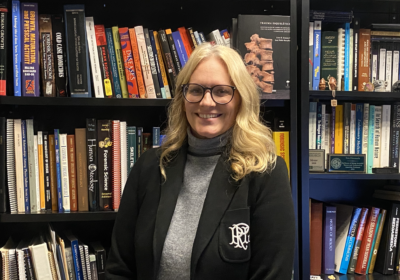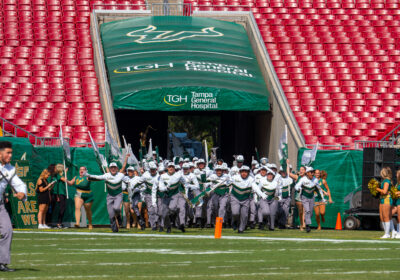Students build comradery through foam fighting

Vice President of the Foam Fighting Club, Charles Ramsey III gets ready to land another hit against his opponent. SPECIAL TO THE ORACLE/LAWRENCE MILLER
Walking around campus, students may see a group of their peers outside donning colorful garments and holding handmade weapons. These students comprise the Foam Fighting Club.
It is very easy to walk by and write the activity off as something silly, but club members are hoping the activity is given a chance.
On the surface, seeing students slashing each other with swords and spears may not appear as something anyone can get into, but the club is very adamant about how easily new members can join the community.
Charles Ramsey III, a junior majoring in creative writing, is now the Vice President of the club.
“Personally, I enjoy the exercise, sparring, meeting people and the friends,” Ramsey said. “Also getting new people involved in the sport and dressing up.”
Contrary to popular belief, there is a difference between foam fighting and larping, a term that is often placed upon the club. Larping is the act of playing a theatrical-type character while fighting, which the club does not focus on.
“We’re not larping unless you want it to be.” Ramsey said. “The majority of the club is fighting-focused. There are only two people who really go into the role playing stuff.”
Drawing close comparisons to other combat-related sports, such as fencing, two foam fighters often stand opposite of one another before the round. Landing firm, but not painful, hits, the two players go back and forth until one can carry on no longer. Rounds are fast, exciting and precise, always resulting in a smile from both players after an exhausting battle fought.
Each member purchases their own weapons, ranging from $20 to $50, however there is plenty of free equipment prospective members may borrow if they would like to give it a chance without the financial investment.
The weapons are made out of rope, grip tape, duct tape, foam, yoga mats and really anything else soft enough to not hurt a fellow member, but firm enough to let them know a solid hit has landed.
With so many different combinations of weapons varying in length and weight, each member has developed their own personal fighting style, adding a unique personality to each player on the field.
Despite the seemingly violent nature, the activity is surprisingly safe. A high amount of effort is put into constant repairs on the weapons to ensure maximum safety, and each member has been thoroughly educated on how to not harm another.
“No one gets hurt doing this because we are all about safety,” Ramsey said. “If you have a pre-existing injury, definitely tell us about it, and we’ll be more aware.”
There appears to be many misconceptions about the club and if students were to better understand what exactly the activity entails there may be more inclination to join. Every student who walks off the sidewalk to pick up a sword leaves with an unadulterated smile on their face, which is something more students could be experiencing if they were not afraid to try.
“I absolutely think there is a stigma,” Ramsey said. “People walking by see it as silly stuff, and might have a fear of not looking cool.”
Foam fighting exists across many states and countries, steadily growing in popularity each year.
The club meets weekly in order to prepare for nationwide tournaments, as the U.S. continues to be the most popular location for the sport.






